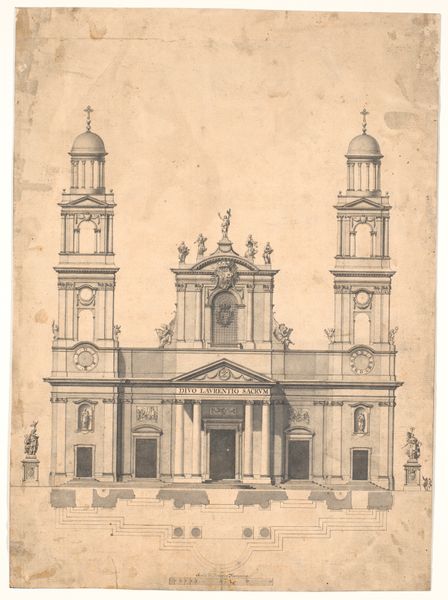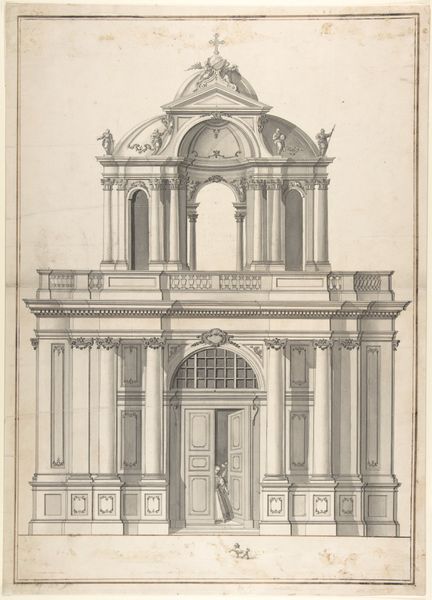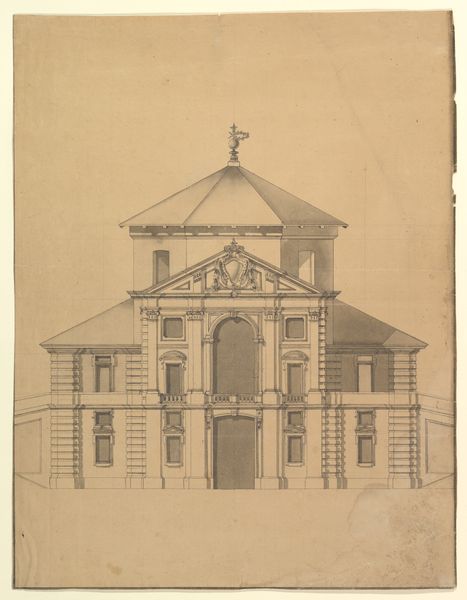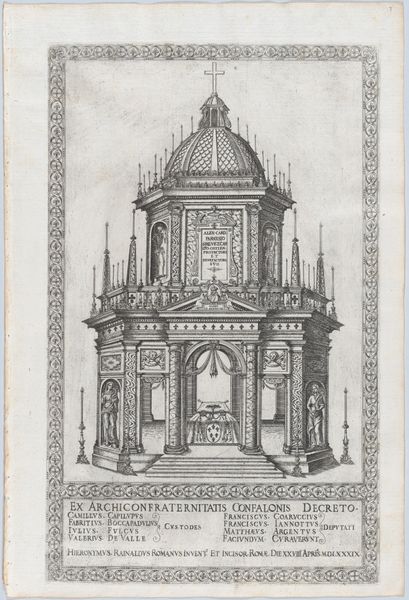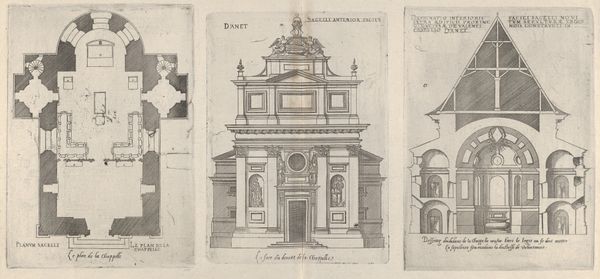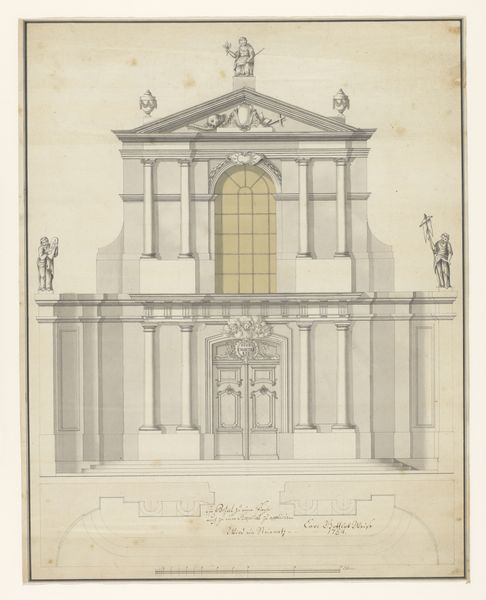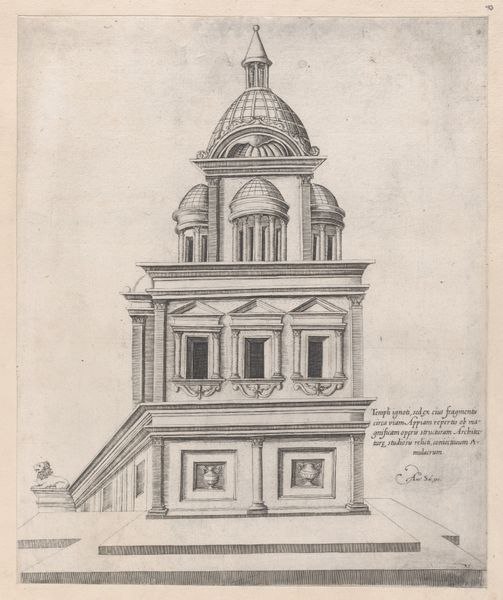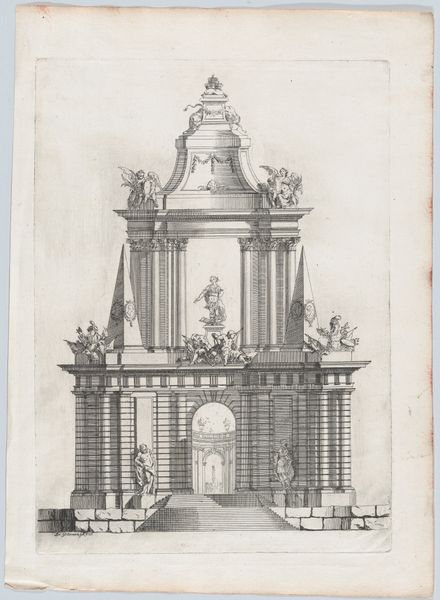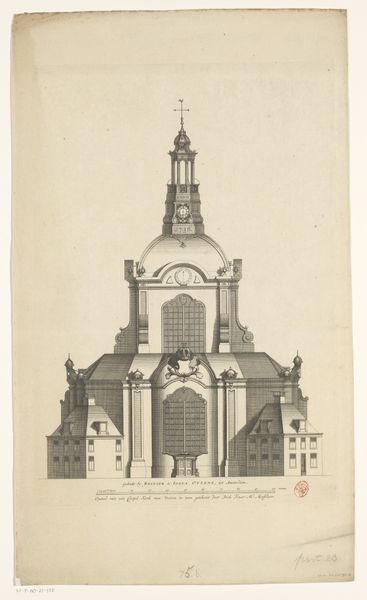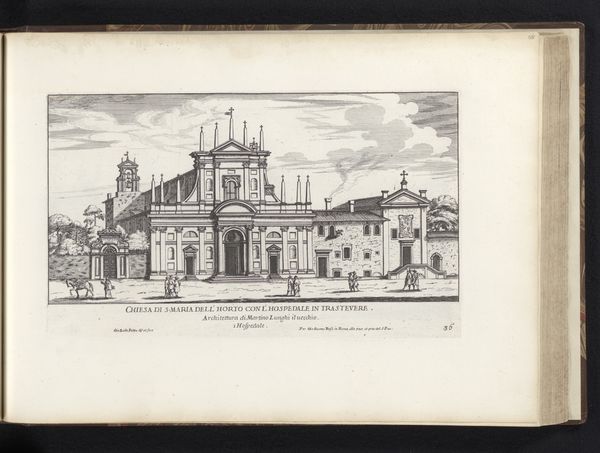
Opstand van de façade van de basiliek SS. Annunziata del Vastato te Genua 1622
0:00
0:00
nicolaesryckmans
Rijksmuseum
engraving, architecture
#
baroque
#
coloured pencil
#
line
#
italian-renaissance
#
engraving
#
architecture
Dimensions: height 423 mm, width 339 mm, height 583 mm, width 435 mm
Copyright: Rijks Museum: Open Domain
Curator: What immediately strikes me about this engraving is its austere elegance, it exudes calm precision. Editor: Precisely, you have touched upon the architectural engraving titled “Opstand van de façade van de basiliek SS. Annunziata del Vastato te Genua” which translates to “Elevation of the facade of the basilica SS. Annunziata del Vastato in Genoa.” created in 1622 by Nicolaes Ryckmans. Curator: Genoa! Such a rich and politically volatile city at that time. I wonder about the symbolism inherent in the basilica's design. The very concept of elevation, is it purely architectural, or does it represent spiritual and societal aspiration? Editor: Well, consider that religious architecture often mirrors and reinforces the prevailing social hierarchy. Ryckman’s meticulous attention to detail, the perfectly symmetrical facade, speaks to a desire for order and divine harmony within the city-state. Basilicas served as a crucial bridge between the earthly and the divine for its worshippers. Curator: The repetitive nature of Baroque style! The pillars, the windows... doesn't it reflect the repetitive cycle of religious rituals and perhaps, an assertion of institutional power? Editor: I'd add, to see how the Italian Renaissance motifs influenced Northern artists, notice the play of shadow and light that creates visual rhythm but also implies layers of symbolic depth. It is reminiscent of ancient Roman temple facades and the engraver probably alludes to timeless ideals through recognizable features. Curator: Absolutely. And looking closely, the flag on top catches the eye. In what ways might that draw our attention to matters of power, territory, or trade specific to the Republic of Genoa? I wonder whose symbol is displayed in reality atop the Basilca. Editor: I agree, that one symbolic flourish suggests that this seemingly neutral depiction of architecture is subtly laden with political and commercial associations as was the artist himself, producing art for the bourgeois during a time of great societal changes. Curator: Looking at this image in the Rijksmuseum, centuries later, brings forward questions about the legacy of power and the role that art plays in both reflecting and reinforcing that power over the years. Editor: A beautiful reminder that images hold cultural memory, reflecting back our values and anxieties through time. They invite us to contemplate their cultural symbolism.
Comments
No comments
Be the first to comment and join the conversation on the ultimate creative platform.


